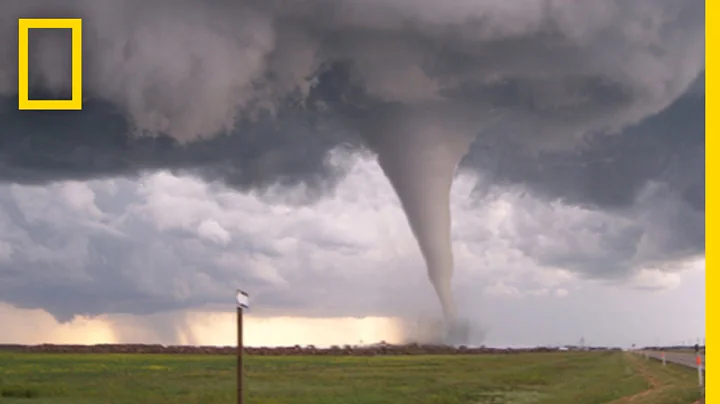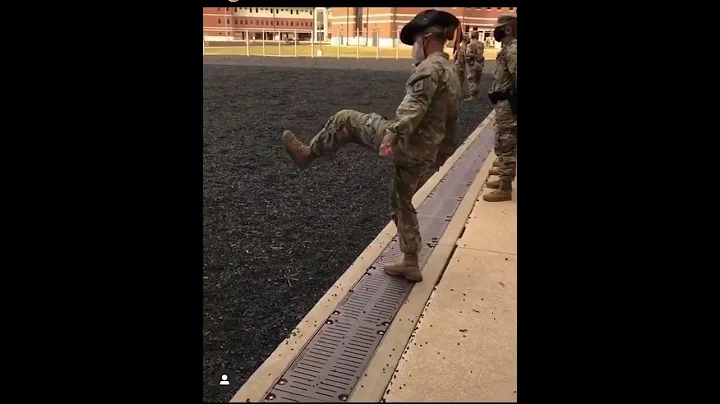On July 1, AVIC publicly released new naming rules for eight categories of aircraft, adjusting the naming of aircraft currently equipped by various military services. One of the biggest features of this naming change is the addition of many traditional cultural elements. The new naming also cancels some well-known but limited names. For example, the Z-19 was adjusted from "Black Tornado" to "Thunderbolt". 19", and also fills the gap in the naming of auxiliary models such as early warning aircraft and anti-submarine aircraft . Generally speaking, AVIC's collective naming of "Shanghukou" for its main aircraft models this time makes the naming of new aircraft models traceable, and it clearly has the intention of promoting traditional culture and taking the lead in external publicity. However, for some models with a higher starting point, the new rules have also made their naming more difficult.

The J-16 is named "Qianlong"
In general, AVIC is divided into eight categories: fighter aircraft , bomber , transport aircraft , helicopters, trainer aircraft , unmanned aerial vehicles, special aircraft, and general aircraft. Classify and clarify the naming rules one by one. Among them, fighter jets attract the most attention from the outside world, and are also the models with the richest types and the most distinctive cultural display. Specifically, the naming of the J-10 "Ronglong", J-20 "Weilong" and FC-1 "Xiaolong" has not been changed, while the new names of the J-11 "Yinglong" and J-16 "Qianlong" have been confirmed. The original Su-27, Su-30, and Su-35 currently in service imported from Russia will not be named, nor will the domestically produced fighters such as J-7 and J-8 that are about to be retired. These four basic rules basically cover all current land-based fighter models, among which the most noteworthy ones are still the newly named "Yinglong" and "Qianlong".

The name of the J-20 "Weilong" has not changed
Before that, the names of the J-10 "Raptor", J-20 "Vyron" and FC-1 "Fierce Dragon" were all well known, and these names were also It is a typical concrete vocabulary. Among them, "meng", "wei" and "xiao" are minimalist summaries of the positioning or characteristics of the three fighter jets, while the newly launched J-11 "Yinglong" and J-16 "Lian" Dragon" is completely different. "Yinglong" and "Qianlong" sound a little confusing, but both are part of ancient Chinese culture . Among them, the name "Yinglong" of 歼-11 is a kind of winged dragon in ancient mythology. It has been described in a large number of documents from the pre-Qin Dynasty to the Ming Dynasty. "Yinglong" in the myth is also a unique female non-humanoid creature. God of the World, among the children she gave birth to were the famous mythical beasts Phoenix and Kirin .

The name of the J-11 "Yinglong" comes from ancient mythology
while the name of the J-16 "Qianlong" has two meanings. On the one hand, the paleontological community refers to a Jurassic reptile fossil unearthed in Liaoning as Qianlong, which is a type of Chinese aquatic lizard. This obviously does not meet the positioning of the J-16. On the other hand, the Qianlong is a kind of dragon that lives on land and water in ancient mythology. The first chapter of the "Book of Changes" "Qian Gua" says, "On the ninth day of the lunar month, do not use the Qianlong", which means that when the strength is relatively weak, It is necessary to lurk and accumulate strength, and not to act recklessly. This meaning is not particularly suitable for the J-16, a heavy-duty third-generation and a half fighter aircraft, but it is obviously much better than the "Lizard". In fact, as the first independently designed advanced fighter jet of AVIC, the J-10 is more suitable for the nickname "Qianlong". However, since it was given the name "raptor" many years ago, it seems inappropriate to replace it halfway. , finally achieved the name of the J-16’s Qianlong.

The J-16 and the "Qianlong" do not seem to be particularly compatible.
In terms of time, it has been 22 years since the first batch of J-11A fighter jets entered the air force service, and it has been more than 6 years since the first batch of J-16 fighters were equipped with troops. If The two were named "Yinglong" and "Qianlong" a long time ago, so it is impossible for the outside world to know anything about them. Therefore, it is believed that these two fighter jets were just named recently and clearly highlight Chinese traditional culture for propaganda purposes. From this point of view, the "flying dragon" in the "Qian Gua" in the first chapter of the "Book of Changes" "Nine Five, the flying dragon is in the sky, benefiting the adults" has a very good meaning and echoes the "hidden dragon", so it is the most suitable name. Future J-35 land-based model.However, as a medium-sized stealth fighter for both land and sea purposes, the naming of the J-35 carrier model may cause some headaches.

In the future, the "J-35" may be named "Flying Dragon"
According to the new rules of the Aviation Industry Corporation of China, sea-based carrier-based fighter jets are named after "shark". For example, the current J-15 is named " Flying Shark" . In accordance with the new concept of abandoning concrete vocabulary naming and highlighting traditional Chinese culture, it is no longer possible to adopt names such as "tiger shark" and "violent shark". However, in traditional Chinese culture, there is not much contact with sharks. "Shark" is the only word that can be associated with it. Maybe it will eventually be given to the ship-based J-35 and then board the deck of the 003 aircraft carrier. However, no matter what, the name of the FC-31 prototype, the predecessor of the J-35, is " Falcon ", which is destined to not be extended to the J-35.

The J-15 has long been named "Flying Shark"
Compared with the large-scale fighter force with many models, the bombers equipped by the Navy and Air Force currently only have the H-6 series. Since there are not many sub-models, according to the new regulations Naming is not easy either. According to the promotional poster of AVIC, the third-generation improved H-6K H-6K H-6 series is named "H-6K H-6J" (the same as the naval version H-6J). It adds an aerial refueling device to the H-6K. The H-6N, which has a greatly increased range, is singled out as "Thor". The new naming of these two bombers continues the naming principle of highlighting traditional culture. Compared with "God of War", a title rich in Western mythology, "God of Thunder" is a more traditional god in ancient Chinese mythology. The outside world's direct feelings about the two new names generally believe that the starting point is too high.

People are quite controversial about the "God of War" name of the H-6K.
No matter how improved the H-6 is, after all, it is still the foundation of the Soviet Tu-16 medium-range bomber more than 60 years ago. Among the bombers in active service in the world, theoretically, it can suppress the use of vortex at most. The tu-95 of the propeller engine is far from the advanced models such as tu-160, B-2A, B-1B. In fact, as early as when pictures of the H-6K prototype with the word "God of War" scrawled on it leaked out on the Internet, there was a lot of discussion from the outside world, thinking that the H-6K was not enough to bear such a "heavyweight" name. Especially after the domestically produced next-generation H-20 stealth bomber is gradually recognized by the outside world, the powerful connotation contained in the name of the H-6K "God of War" is even more difficult to match in the face of the huge gap with the advanced performance of the H-20 H-20.

There is not much difference in performance between "Thor" and "God of War"
This time, the H-6N was officially given the title of "Thor", and its status as " strategic bomber " was specifically marked on the poster, which is equivalent to redefining the status of the H-6 series. The one-level upgrade also made the outside world further realize that the H-6N may have many outstanding performances that have been ignored by the outside world, but this naming also brings more problems to the naming of the H-20 in the future. Guessing, perhaps the "God of War", which is of great significance in traditional culture and cannot be used easily, is enough to name the H-20, which can roughly match its powerful performance. However, this also means that there is really no choice in the naming of domestic bombers after the H-20.

The name of the Yun-20 "Kunpeng" is very appropriate.
Compared with these problems existing in fighters and bombers, the naming of domestic transport aircraft is relatively easy. The reason is that the Yun-20 was born relatively late, so it adopted the very rare " Kunpeng " naming. Now the Yun-9 and Yun-8 follow closely behind, receiving "Qipeng" and "Hongpeng" respectively. title. Even if you don’t understand the meaning of these two titles, you can still see the traditional mythological color in them just from the words. However, because the image of "Peng" in ancient mythology is too powerful, small and medium-sized transport aircraft such as the Yun-5, Yun-7, and Yun-12 in service in the Chinese Air Force and Airborne Forces have never been used for this purpose. name.

L-15/Coach-10 "Falcon" has excellent performance
In contrast, the trainer aircraft named "Eagle" is much more flexible.In addition to the most advanced L-15/Coach-10 "Falcon", the FTC-2000 series "Mountain Eagle" upgraded based on the JJ-7, and the K-8 "Eagle" trainer aircraft with excellent export performance In addition, -6 has a name for the first time - "Eagle" after more than 60 years of birth, which is very appropriate. It can be said that the domestically produced trainer fleet, which insisted on being named "Eagle" before the new regulations came into being, and has relatively decent titles for various types, is the type least affected by the new regulations. Of course, since the "Eagle" has a rich image in traditional Chinese culture, even if AVIC continues to develop new training aircraft in the future, there is no need to worry about not having a suitable name.

Chujiao-6 has a name for the first time more than 60 years after its birth - "Eagle"
Compared with the name of the training aircraft, which is not a concern, the name of the helicopter field has the largest change and the most controversy. Specifically, the transport-type straight-8, straight-9, straight-11, and straight-20 were successively given the names "Shendiao-8", "Shendiao-9", "Shendiao-11", and "Shendiao-11". The name of the "God Condor-20" once again highlights the traditional mythological elements. Although this kind of naming is rather weird, given that there are indeed many types of transport helicopters and they are not large in size, it is difficult to get a suitable title, so it is barely acceptable. The real focus of the dispute is actually the Z-19 armed helicopter. This armed reconnaissance helicopter was born in the early 21st century and has been called the "Black Tornado" in the past. It is the only main model that has been renamed in this round of new regulations. The new name continues the one used by Wuzhi-10 "Thunderbolt-10" series, but the new "Thunderbolt-19" title is indeed embarrassing. In contrast, it is more appropriate for civilian helicopters to be called the "Auspicious Bird" series.

Zhi-19 became the "Thunderbolt-19"
As for the last special model, it still has strong traditional mythological elements, such as Air Police-500 "Clear Eye-500", Yun-9 anti-submarine aircraft "Sea Eagle-9", The Yun-9 communication machine "Thunder-9" has started a series of naming based on this. The naming of the domestic Dongfeng , Eagle Strike, and Thunderbolt series weapons is quite similar, and it also indicates that auxiliary aircraft with a small number of equipment and relatively complicated model classification will be given a more formal status and future development. will be taken more seriously. In addition, the domestic Yunyou-20 tanker may not have appeared in the naming of this round of new regulations because it has not been officially equipped, but it should not change much.

The Air Police-500 has become a veritable "clairvoyant-500"
In general, the main idea of AVIC's introduction of new naming regulations for military and civilian aircraft is to try to maintain the original naming and refine each on this basis. Model naming rules, and comprehensively highlight traditional Chinese culture. Due to the large movements and the large number of models, there are inevitably some areas that need improvement, but the introduction of this rule is still a very important progress. In particular, the integration of a large amount of traditional culture will be of great benefit to AVIC's image display and external publicity. Perhaps in a few years, when we look back on this round of naming reforms for domestically produced military aircraft, we will regard it as the beginning of a new era.





















